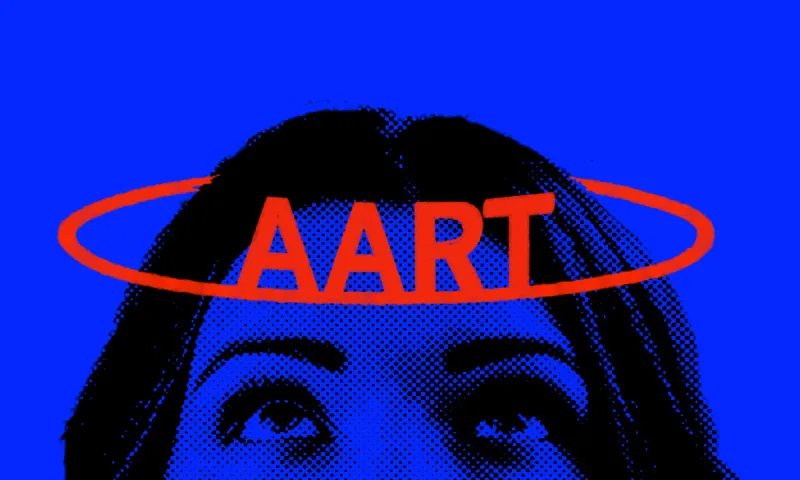
Illustration by II
It’s been dismissed as a popularity contest, credited with making (and breaking) Wall Street careers, and recognized as the definitive ranking of U.S. equity analysts. Institutional Investor’s 2019 All-America Research Team comes out on Tuesday, making its 48th annual appearance.
The methodology is slightly different this time around, but the overall premise remains the same: Some 4,000 investment professionals name the top equity analysts and research providers on Wall Street. This survey-based approach has over the years garnered criticism for not attempting to quantify stock picking acumen or forecasting accuracy, but simply asking respondents to rank their favorites. Some have even derided the AART as a beauty pageant.
It was therefore with a degree of irony that II reached out to the authors of “Gender and Beauty in the Financial Analyst Profession: Evidence from the U.S. and China.” The study, which evaluates the role that gender and facial attractiveness play in the voting process for the AART and a Chinese counterpart, was authored by a group of accounting professors: Congcong Li of Duquesne University, Singapore Management University’s An-Ping Lin, Hai Lu at the University of Toronto, and McMaster University’s Kevin Veenstra.
The authors analyzed whether there was a gender bias in either ranking and whether analysts were rewarded or penalized for their good looks.
“Some people argue that the All-American team is a beauty contest,” Lu says in an interview with II. “And we realized that beauty is closely related to the gender issue. So we put gender and beauty together and tried to determine these two biases.”
The lack of women in the All-America Research Team has been well-documented. II ran the numbers last year and determined that between 2009 and 2018, women never made up more than 13 percent of first-, second-, and third-ranked analysts. As of last year, just six women had appeared in II’s All-America Research Team Hall of Fame, a compilation of analysts who have earned ten or more first-team positions.
[II Deep Dive: The Best Research Firms for Women]
The underrepresentation of women on the All-America Research Team reflects the low proportion of women in the industry at large — but does not appear to indicate a bias against female analysts on the part of AART voters, according to Lu and his colleagues.
They found that female analysts were actually more likely to be named all-star analysts than their male peers, even after controlling for experience and stock-picking skill. The female analysts in the sample were neither significantly better nor significantly worse at forecasting company earnings than their male peers, according to the study.
“Voters in the U.S. discriminate in favor of female analysts,” the accounting professors concluded.
That’s not to say female equity analysts don’t face other forms of bias in the AART — or their overall careers, for that matter. The beauty pageant comparisons may not have been meant literally — but female analysts are at least partially judged based on their looks, according to the study.
Unlike in a real beauty pageant, however, female analysts in the U.S. were penalized for having a pretty face.
“There are stereotypes about women,” Lu says. “And this type of stereotype is related to the gender issue — male analysts aren’t affected by how attractive they are.”
To evaluate the effect of beauty, the accounting professors used Amazon’s crowdsourcing service Mechanical Turk. MTurk workers were asked to rate analyst photos on a scale of 1 to 100 and say whether they found analysts to be below average in looks, average, attractive, or very attractive. The authors also recruited undergraduate and business school students to rate photos, with each U.S. analyst being rated by 10 MTurk workers and 20 students on average. About 57 percent of the MTurk workers were male, with an average age of 36.
They found that for women in the top decile of facial attractiveness, their good looks completely negated the 1.5 percent probability boost for female analysts in being voted onto the AART.
Interestingly, the results were the complete opposite for equity analysts in China, as ranked by New Fortune Magazine.
Similarly to the AART, the New Fortune ranking is based on the opinions of buy-side money managers. Unlike the AART, voters appear to be significantly biased against female stock analysts. (The study did not examine how these biases figure in II’s ranking of Chinese stock analysts, the All-China Research Team.)
Lu and his co-authors found that male analysts in China were more likely to be named all-star analysts than their female peers, despite the fact that the female analysts actually performed better. According to the study, female equity analysts in China were 2 percent more accurate in their stock forecasts than their male counterparts.
In China, being physically attractive helped female analysts earn all-star rankings. In fact, looks were seen as so important that when the authors asked a plastic surgeon to review photos of Chinese analysts, the doctor identified 27 female analysts — about 24 percent of the female sub-sample — who appeared to have undergone plastic surgery to improve their looks.
“The financial industry is so competitive, that if you have talent you should be rewarded,” Lu says. “But stereotypes and bias exist in our society regardless of how competitive the industry is.”





